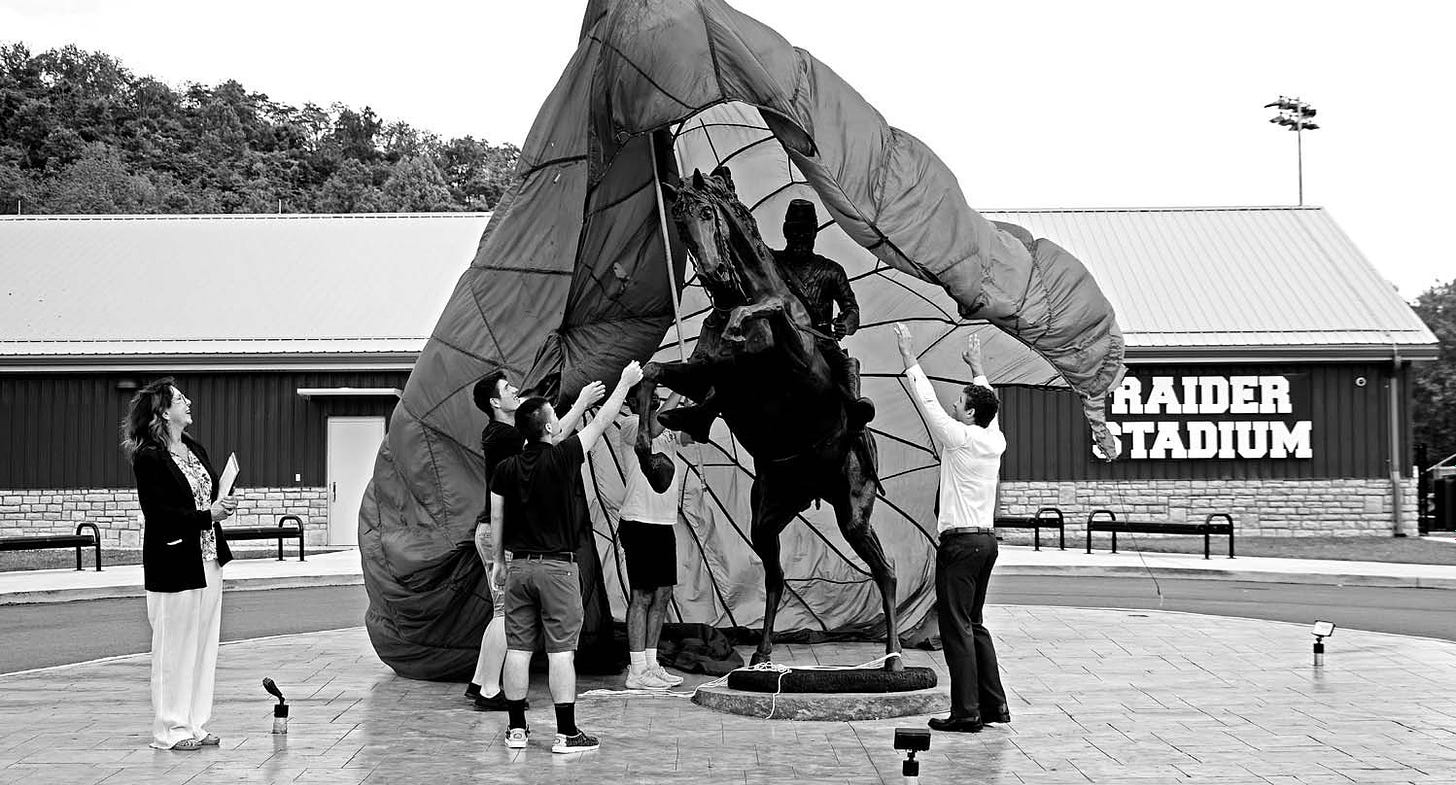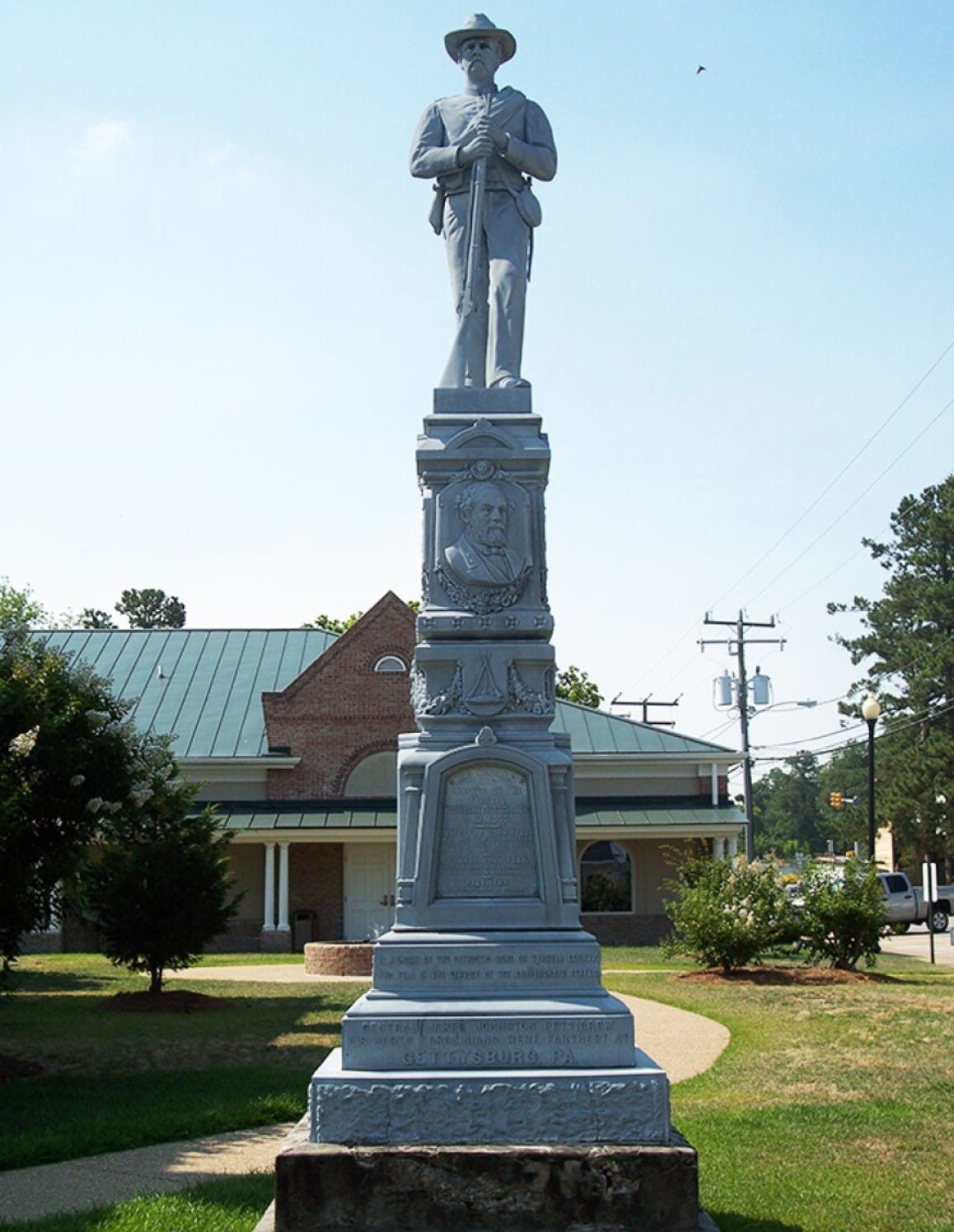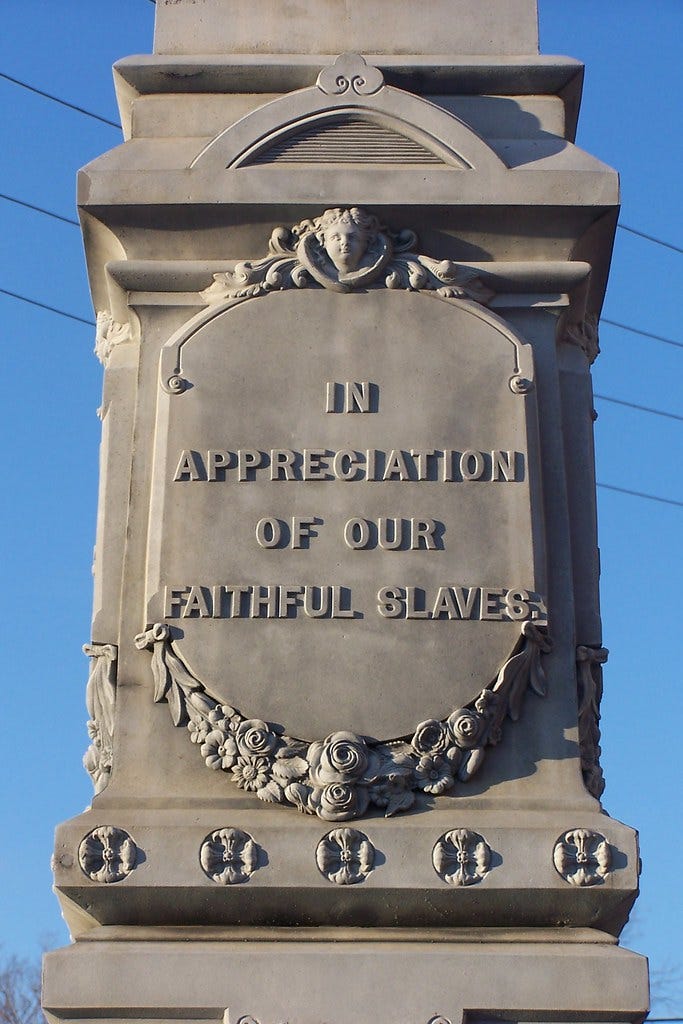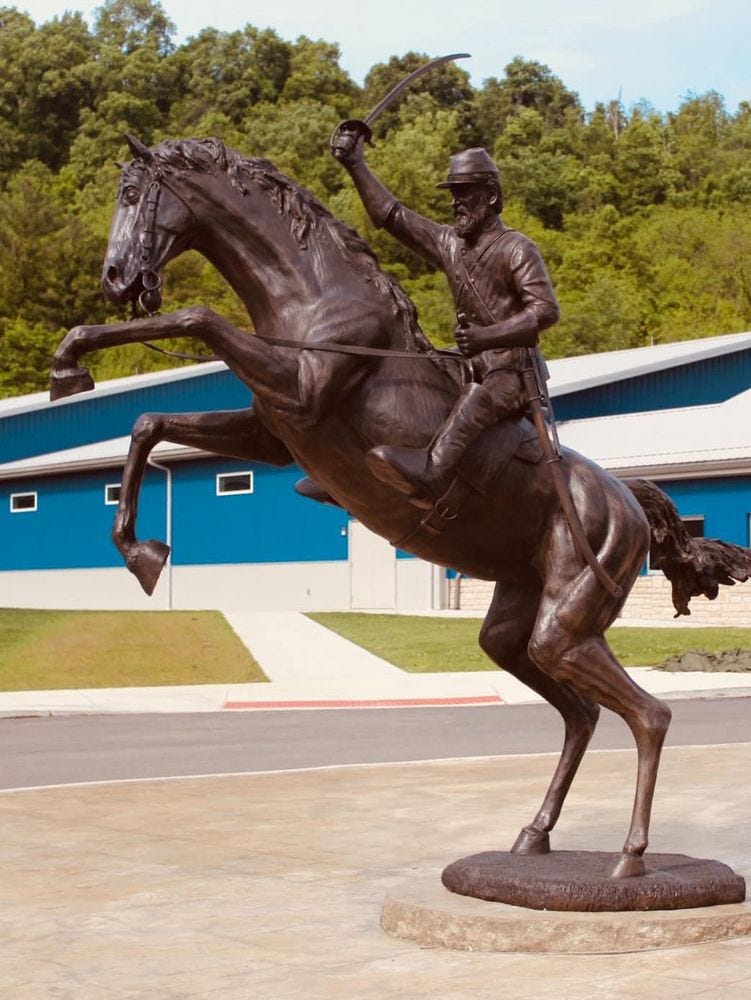Residents Call for the Removal of a Faithful Slave Statue in North Carolina, While a School Unveils a Confederate Monument in Ohio
Office Hours: If you are a paid subscriber, keep an eye out for an email with a zoom link for our conversation tomorrow evening at 8PM EST about the recent dedication of the Confederate monument on the Franklin battlefield. Eric Jacobson will join us to answer your questions. There is still time to upgrade if you are interested in joining us. Hope some of you can make it.
There is a good deal of talk about Civil War monuments this week—a reminder that this is still a hot topic in many communities across the country.
A group calling itself The Concerned Citizens of Tyrrell County in North Carolina has filed a lawsuit calling for the removal of a Confederate statue dedicated in 1902 and located on the courthouse grounds. At first glance it looks like your typical soldier statue, but among the numerous inscriptions on the statue is included a reference to the community’s “faithful slaves.
“IN / APPRECIATION / OF OUR / FAITHFUL SLAVES”
According to historian, Micki McElya:
The faithful-slave trope was the ultimate example of southern paternalism that described the master-slave relationship as essentially familial, existing outside of market forces. Advocates proclaimed slavery to be morally superior to free labor, arguing that it was more truly humane, based on a lifetime of mutual care and obligation as well as natural racial hierarchies. By this logic, some were born to be slaves while others were born with the responsibility to manage, guide, and care for them. This was often summed up in the phrase that certain slaves (and later free domestic workers) were ‘like one of the family.’ The word ‘like,’ of course, glosses over American slavery’s endemic sexual exploitation and family destruction, as well as the fact that many enslaved people were their owners’ family.
The lawsuit claims that the statue conveys the message that Black residents preferred slavery to freedom, which, of course, is exactly what such language was intended to reinforce.
According to the lawsuit, “The point of putting such a monument near the door of the Tyrrell County Courthouse was to remind Black people that the county’s institutions saw their rightful place as one of subservience and obedience, and to suggest to them that they could not and would not get justice in the courts.”
Like other states, North Carolina has passed legislation preventing the removal of monuments it deems to be ‘war monuments.’ The “faithful slaves” referenced on this particular monument is a reminder that Confederate statues, including the many mass-produced soldier statues, dedicated at the turn of the twentieth century were never intended simply to honor the Confederate rank and file.
Meanwhile, across the Ohio River a high school has dedicated a new monument honoring Morgan’s Raiders, led by Confederate general John Hunt Morgan raided Ohio in the summer of 1863. Folks, it doesn’t get much stranger than this.
In July 1863, Confederate General John H. Morgan led a force of 2,000 cavalrymen across southern Ohio. Morgan's force entered Ohio from Indiana on July 13. A chase ensued as Union cavalry pursued Morgan's men across twenty Ohio counties. Most of Morgan's troops were captured in Meigs County at the Battle of Buffington Island. Morgan, with several hundred cavalry, managed to escape. They raced northeast, fighting skirmishes along the way, and forded the Muskingum at a point near Rokeby Lock on July 23, 1863. As they went, the soldiers raided local farms for food and replacement horses. They were finally captured in Columbiana County on July 26. The raid marked the northern-most point ever reached by Confederate forces. Across southern Ohio, frightened residents burned bridges over fordable streams and buried silver and jewelry to hide them from the marauders.
That’s right. A school in Ohio chose a mascot that honors Confederates who terrorized the region including the county of McConnelsville in Morgan County, where the high school is located. This project was spearheaded by four students.
From a certain perspective the choice is understandable. As historian Christopher Phillips has noted, the Ohio River may have separated slave from free states, but family connections and culture were fluid throughout this region. Then there is the fact that the adoption of the mascot took place in the mid-1960s at the height of the Civil War centennial.
Still, that’s a pretty large monument to a Confederate cavalryman unveiled in a state that never joined the Confederacy. I can’t help but wonder what students learn about the Civil War in their history classes. Do I even want to know?
Civil War memory in the United States never fails to fascinate.









UPDATE: Here is some important context that a historian friend added to the post on my Facebook page.
"The statue also has a curious inscription that the "Confederate soldier fought and won the admiration..." (of people who value duty, or something close to that) but the break in the sentence is at won, and upon first reading it seems to say that the Confederate soldier won. It is an entirely metal monument - pressed to look like stone at the bottom (which is singular of monuments I have seen in NC). If memory serves, it is the only such monument to even mention slaves or slavery in NC. There is a back story, probably several. Tyrrell County was a contested landscape with White men who joined both armies and navies (another ancestor William B. Liverman was captured at Beech Grove February 2, 1864 but rather than hanged at Kinston he was sent to Richmond and died a POW there) and African American men who joined the US forces. Men from both political backgrounds would hide in the woods to escape one force or the other. Often the enslaved community would be the ones who brought them food, etc. In another strong oral tradition an enslaved woman saved the records of the county from US troops - the county officials moved the records to her dwelling and she set up a large cauldron and filled it with water. When US troops showed up at her door she threatened to scald them if they messed with her. Apocryphal? perhaps. I can tell you that Tyrrell County's records are almost all around still - unlike, say, Currituck County or Camden County. It is perhaps this local memory of a service performed that brought about the inclusion of that plaque on the monument. The monument was originally placed in the center of the intersection next to the lot it now stands on. I can understand that some people wish it down. This is part of the back story as I know it but a local historian might have even more to share for understanding that plaque."
Re the ending line, "Civil War memory in the United States never fails to fascinate":
Amen. And concerning Civil War Memory, with a capital M, I'm grateful again, especially for the quotation from (and the link and inherent tip to read) the Atlantic article "The Faithful Slave: How Alex Tizon’s essay echoes a trope with deep roots in American history" by Micki McElya.
I also appreciated the close-up clearly showing the offensive statement on the statue. On the Confederate Memorial that was removed from Arlington National Cemetery, the faithful-slave lie was far less brazenly trumpeted.
Civil War Memory, with that capital M, never fails to educate.